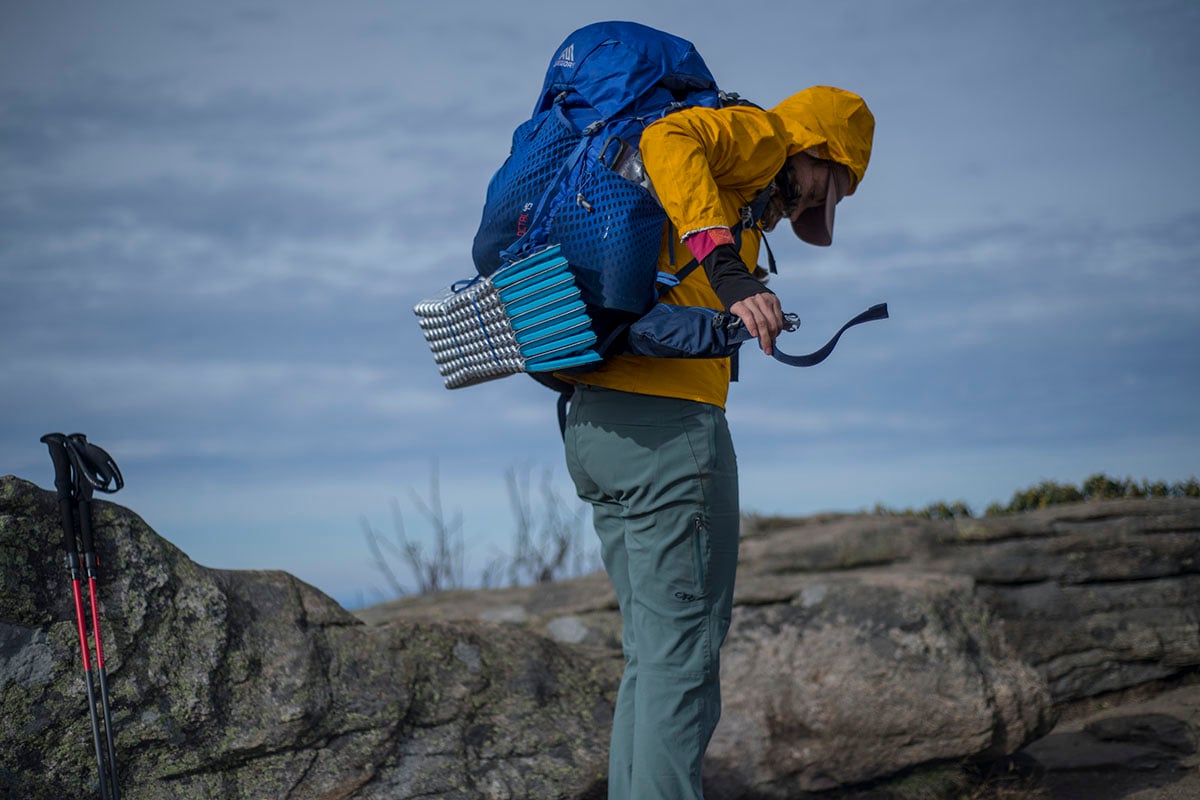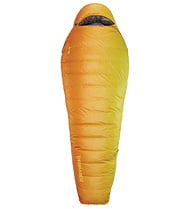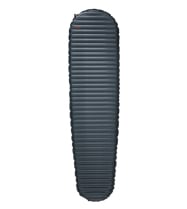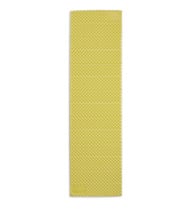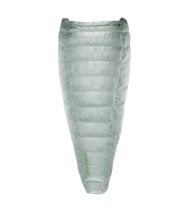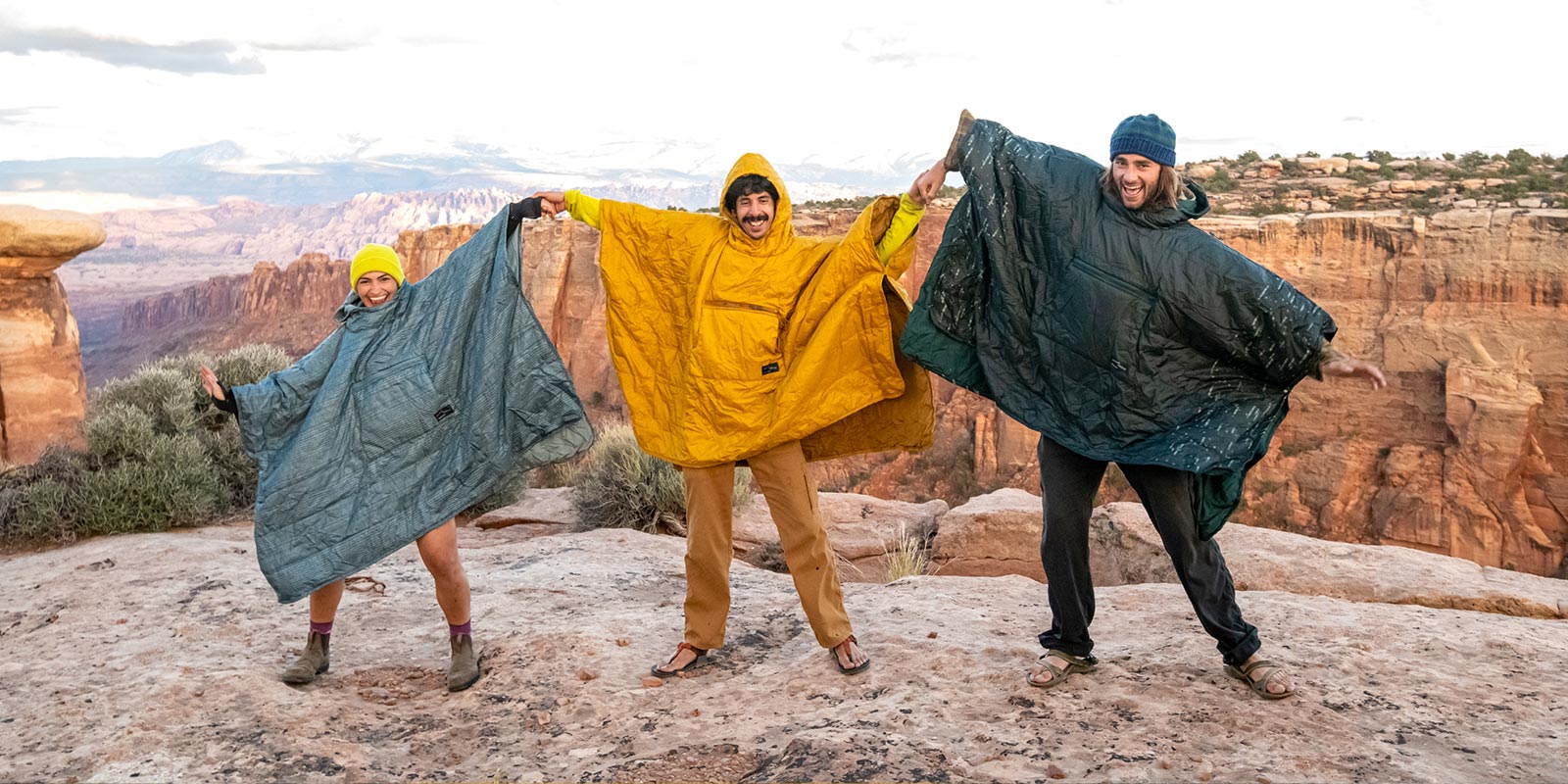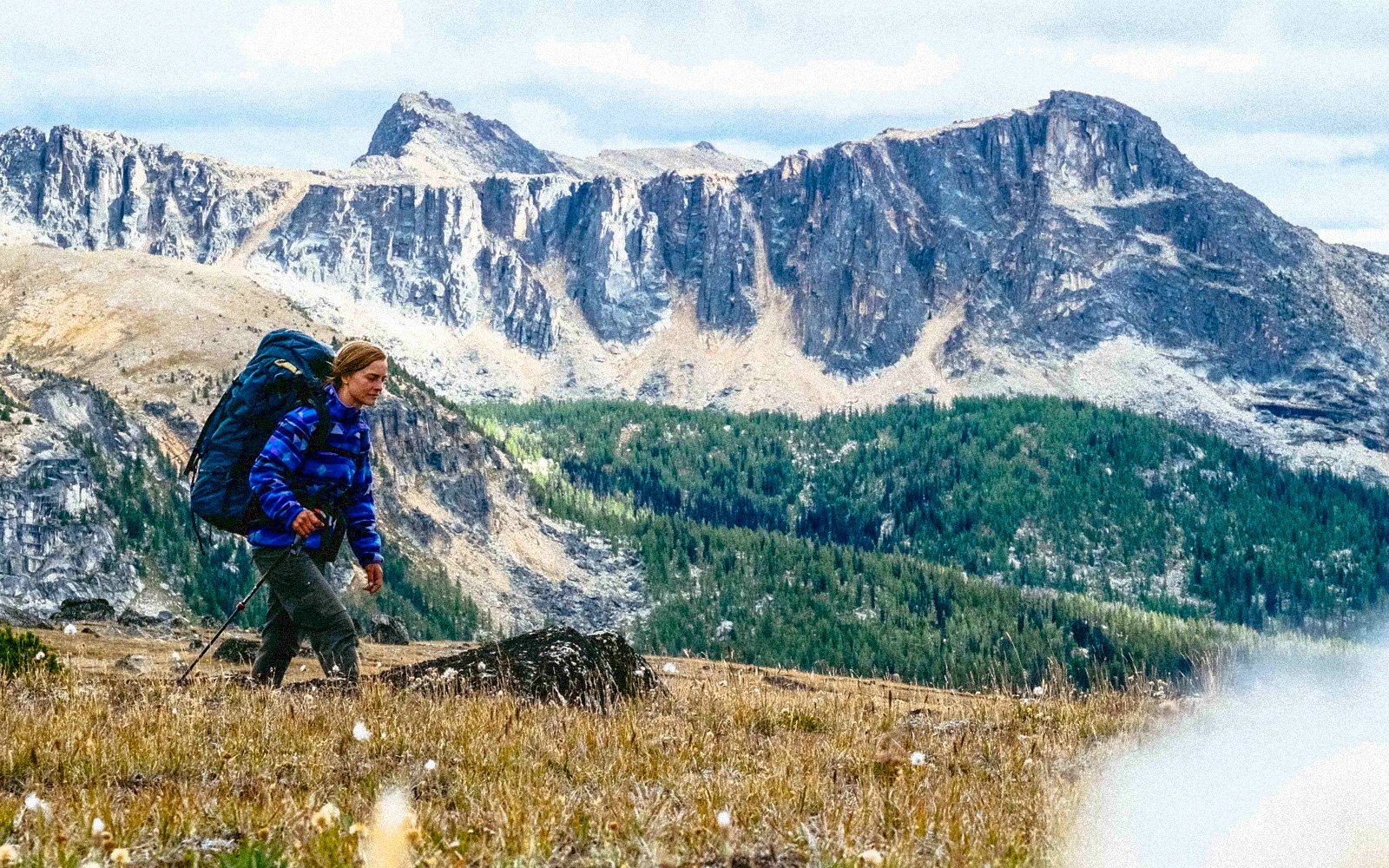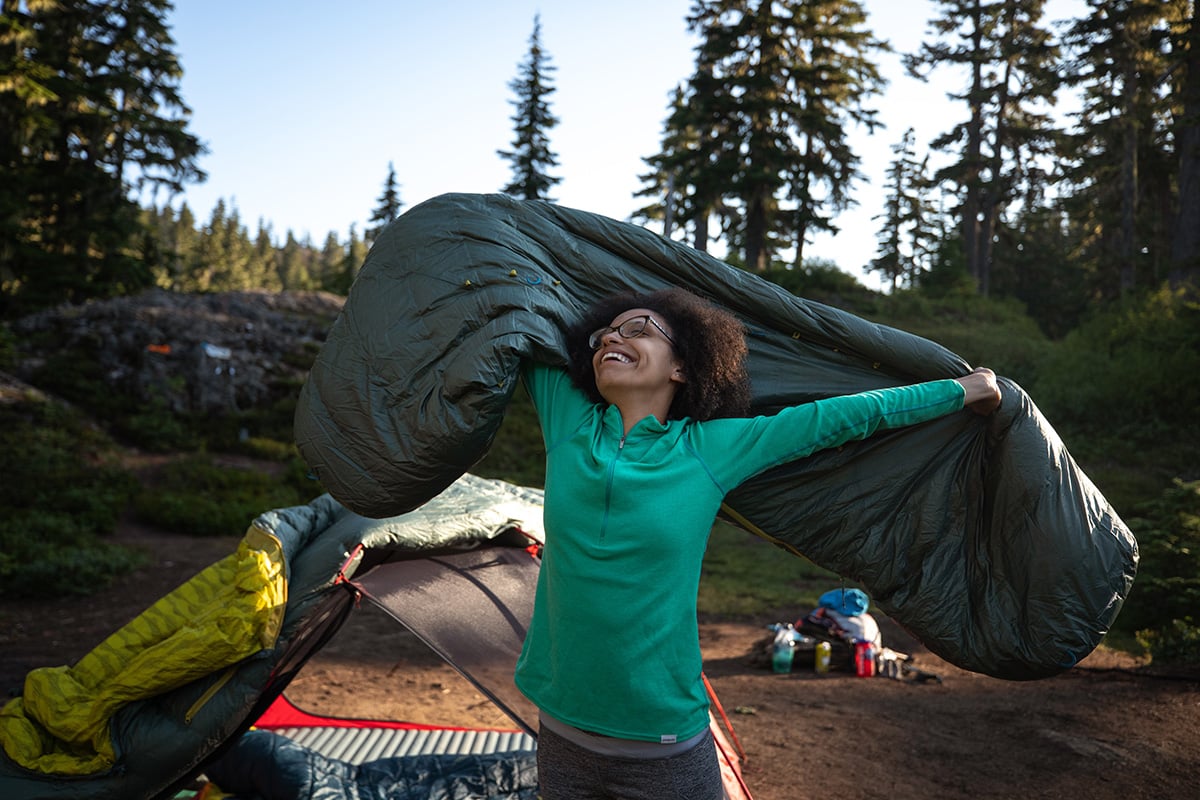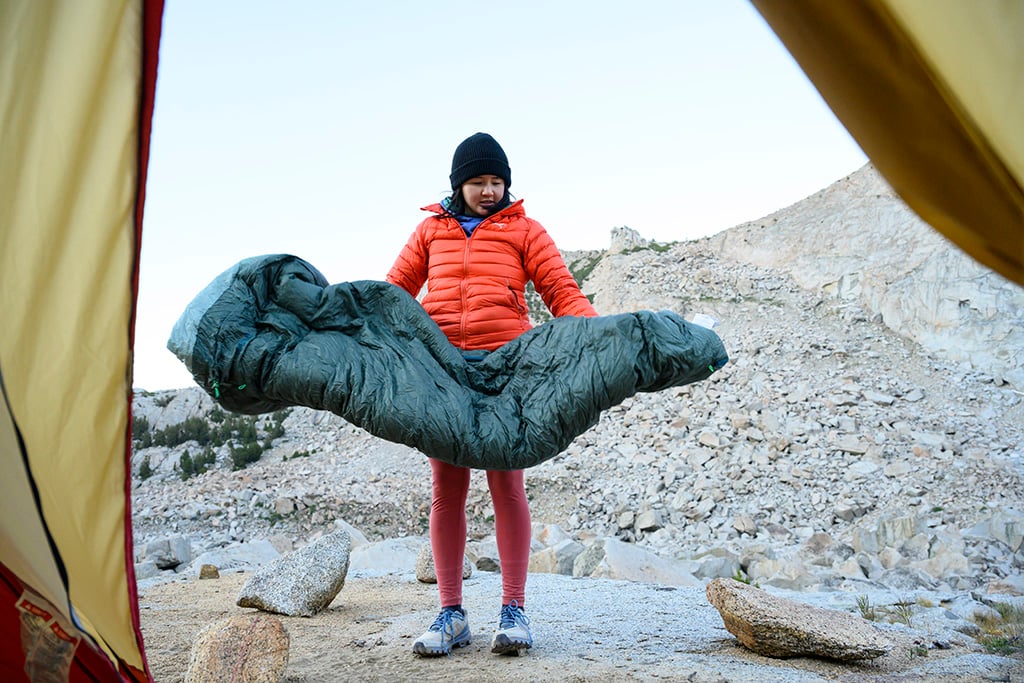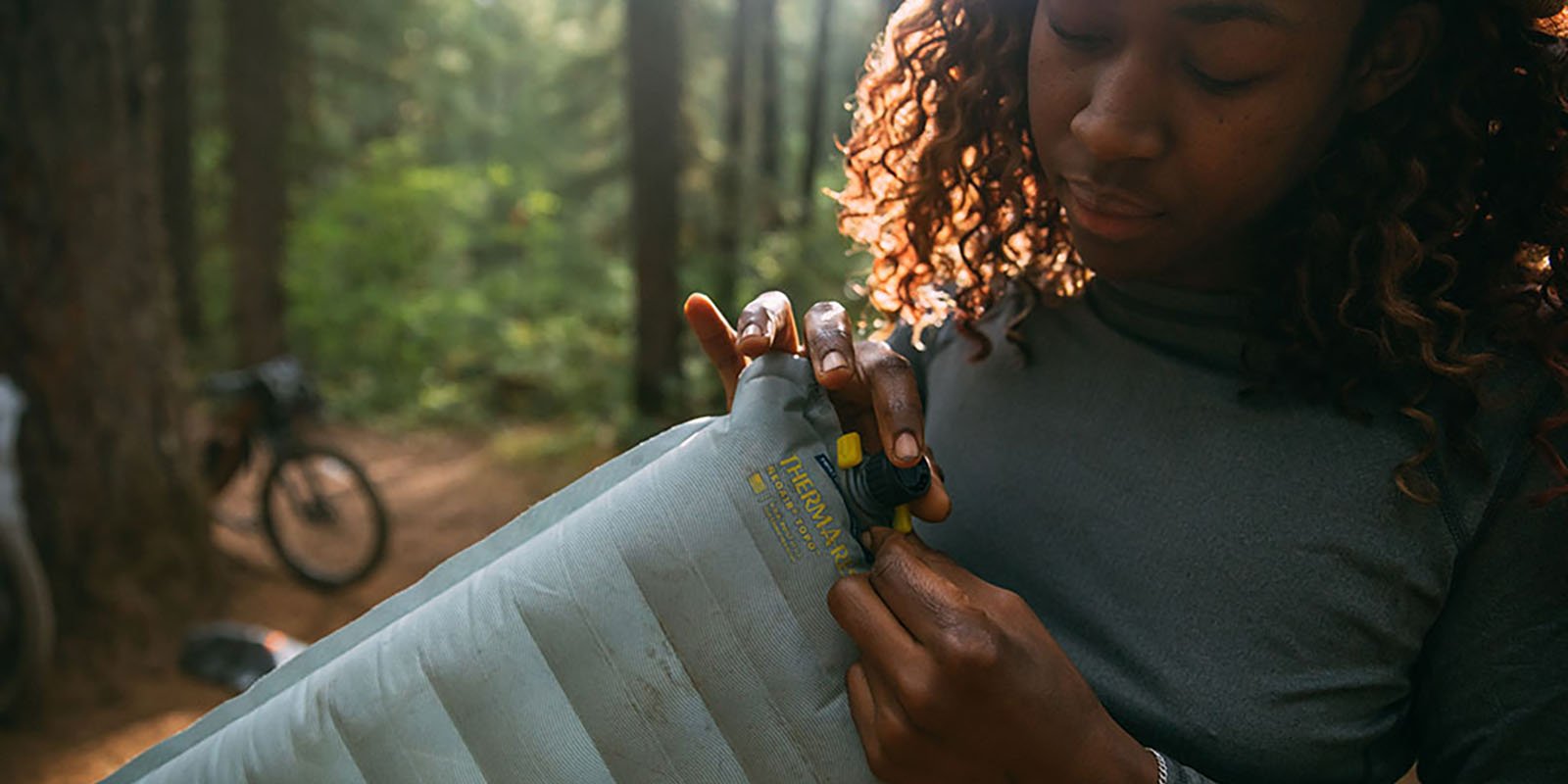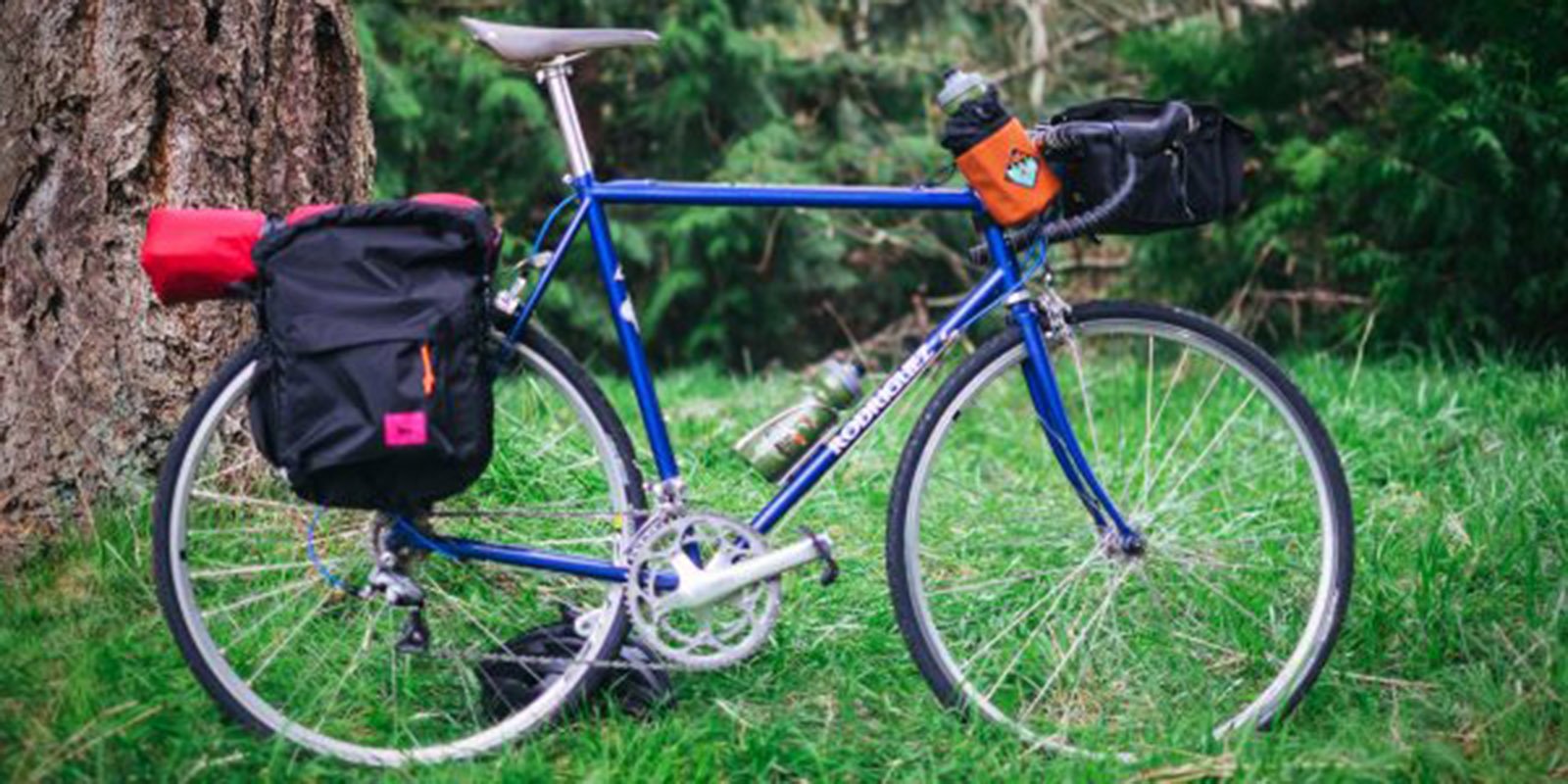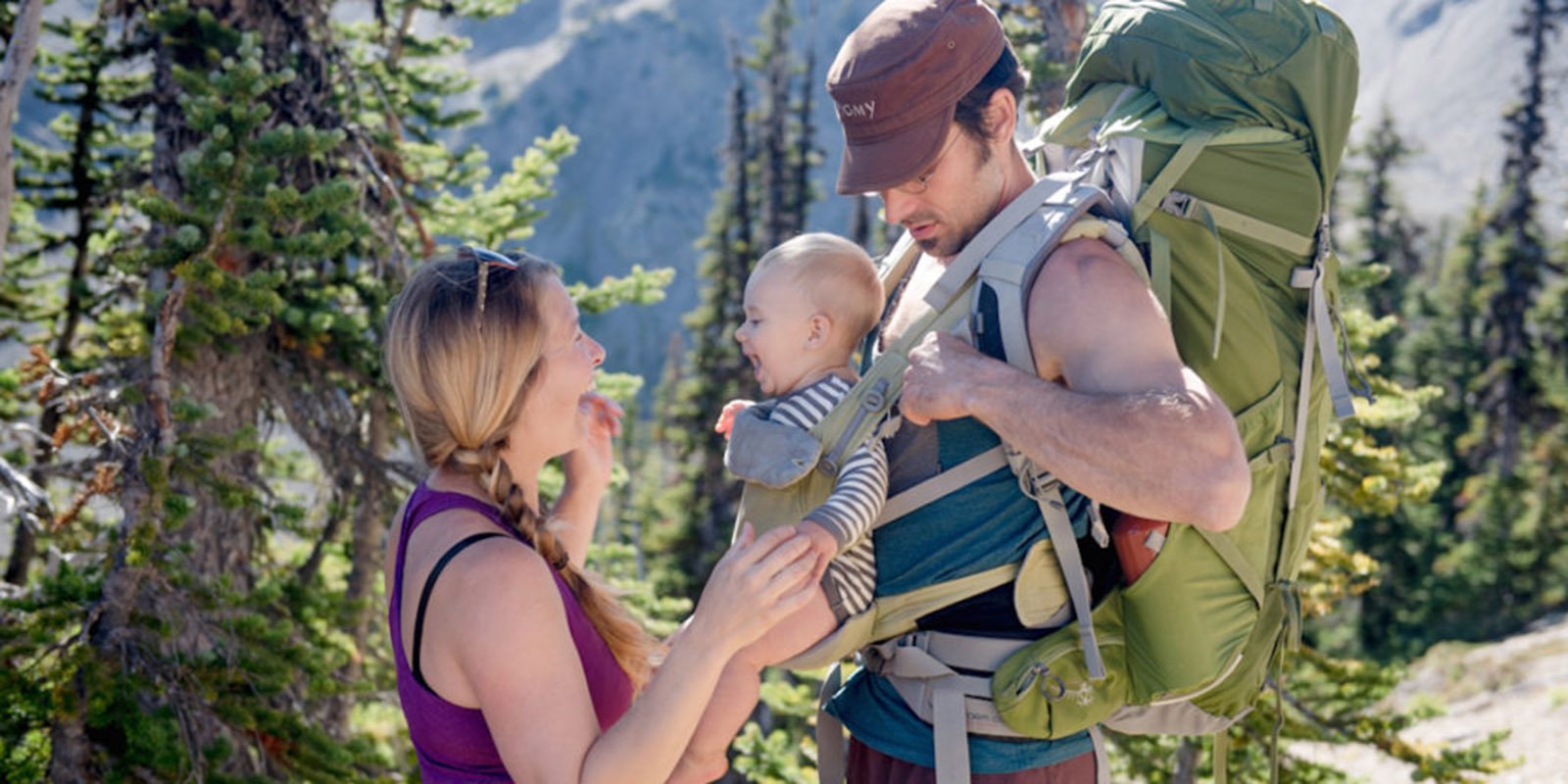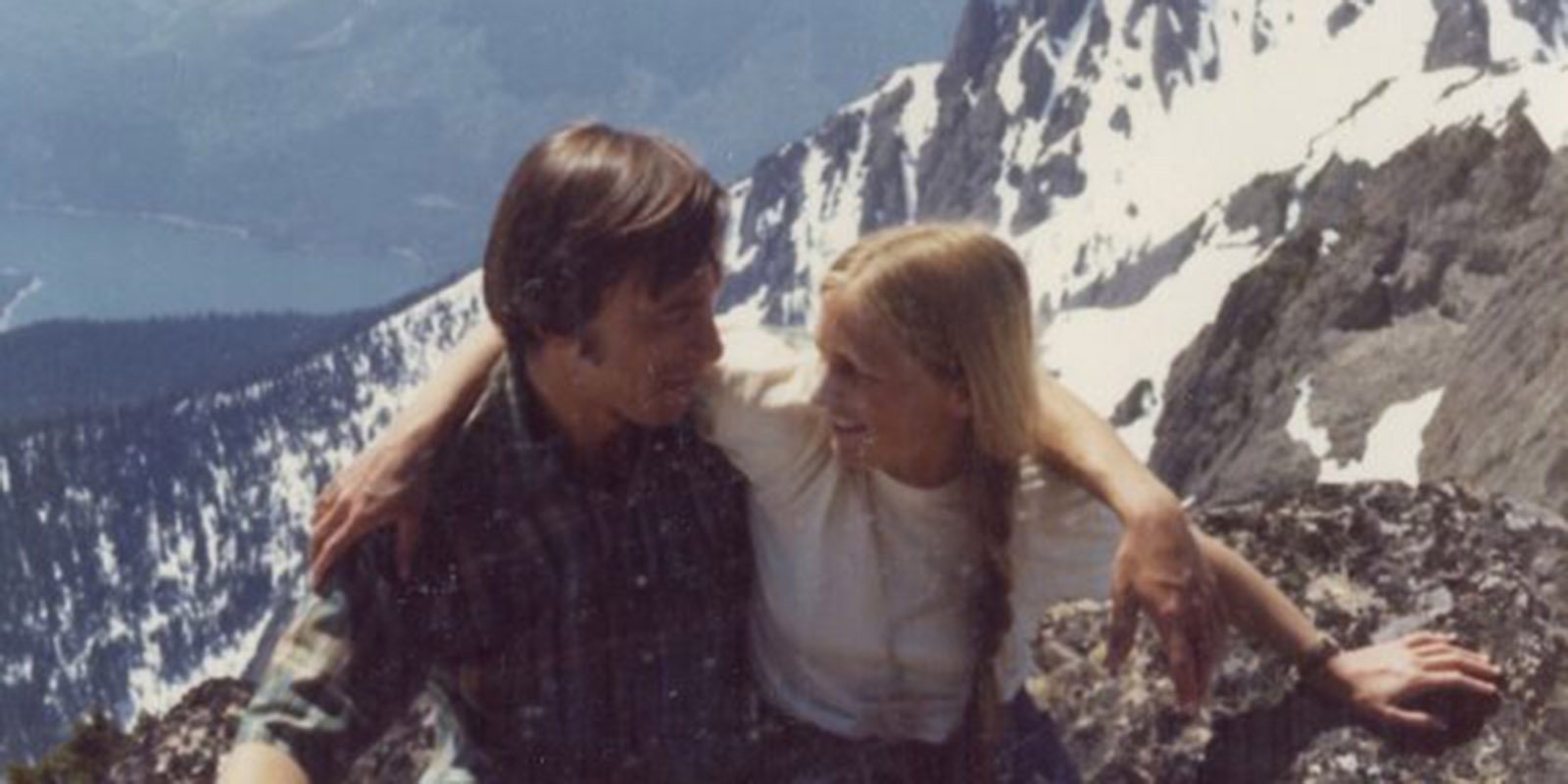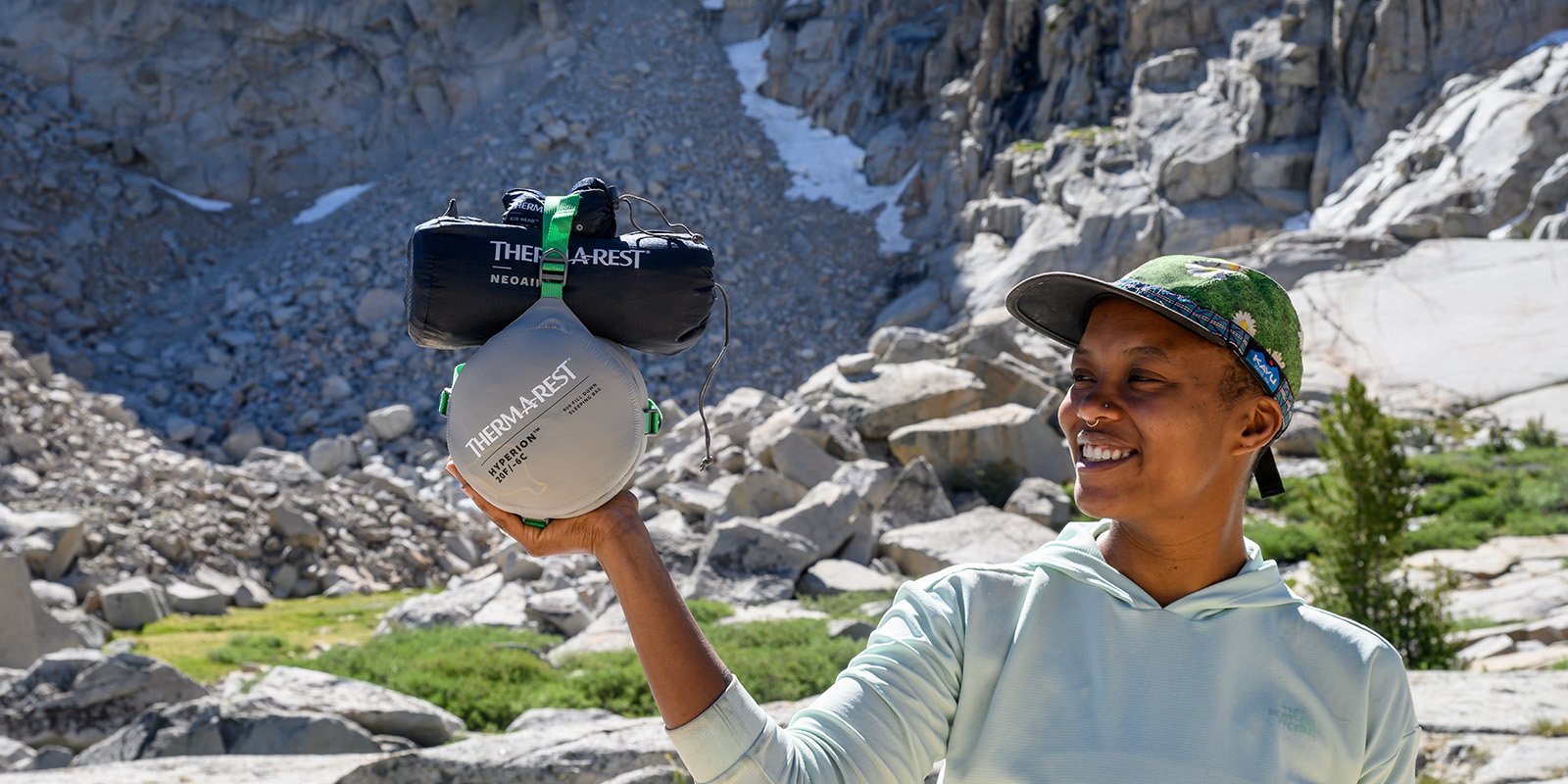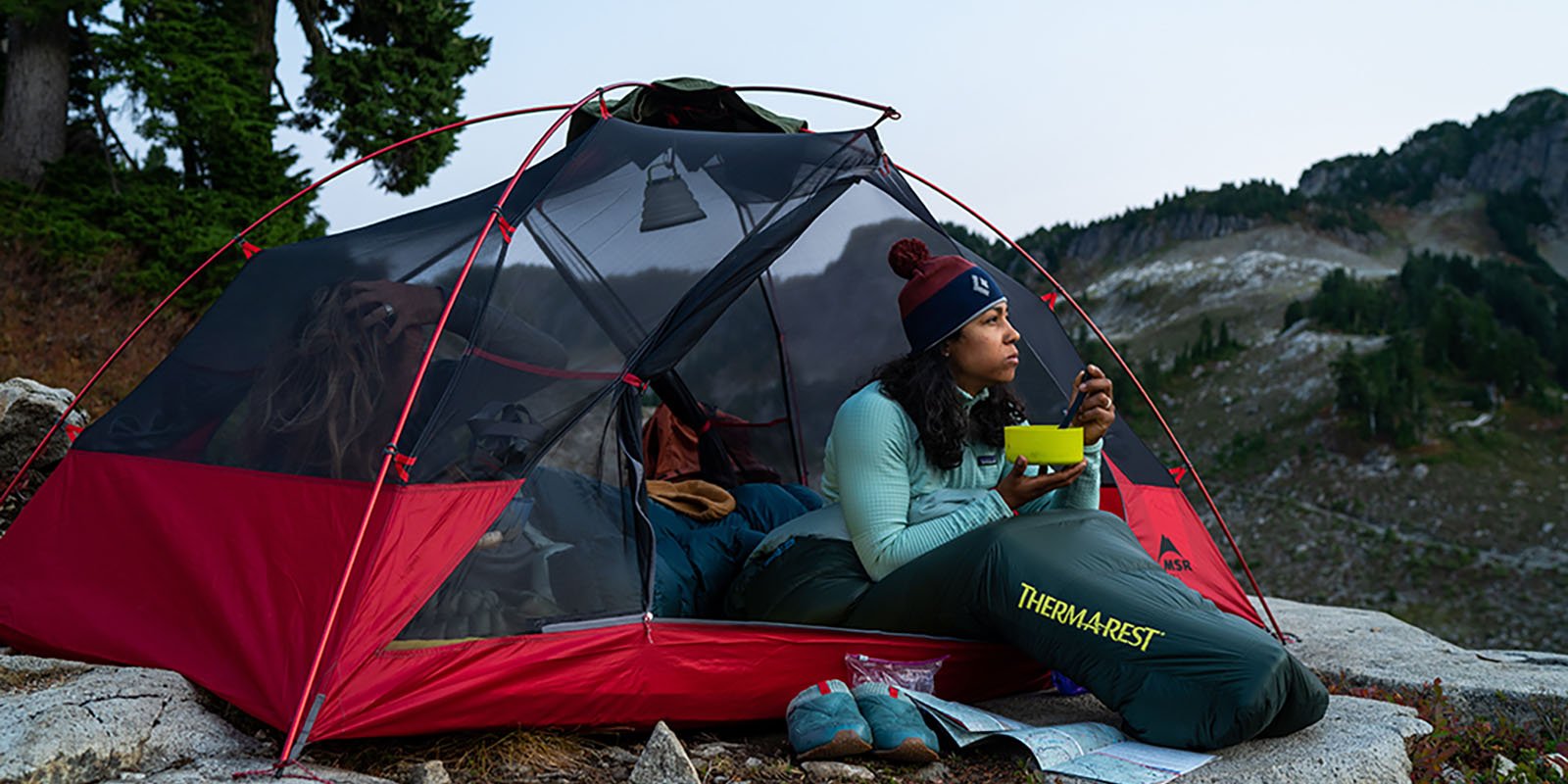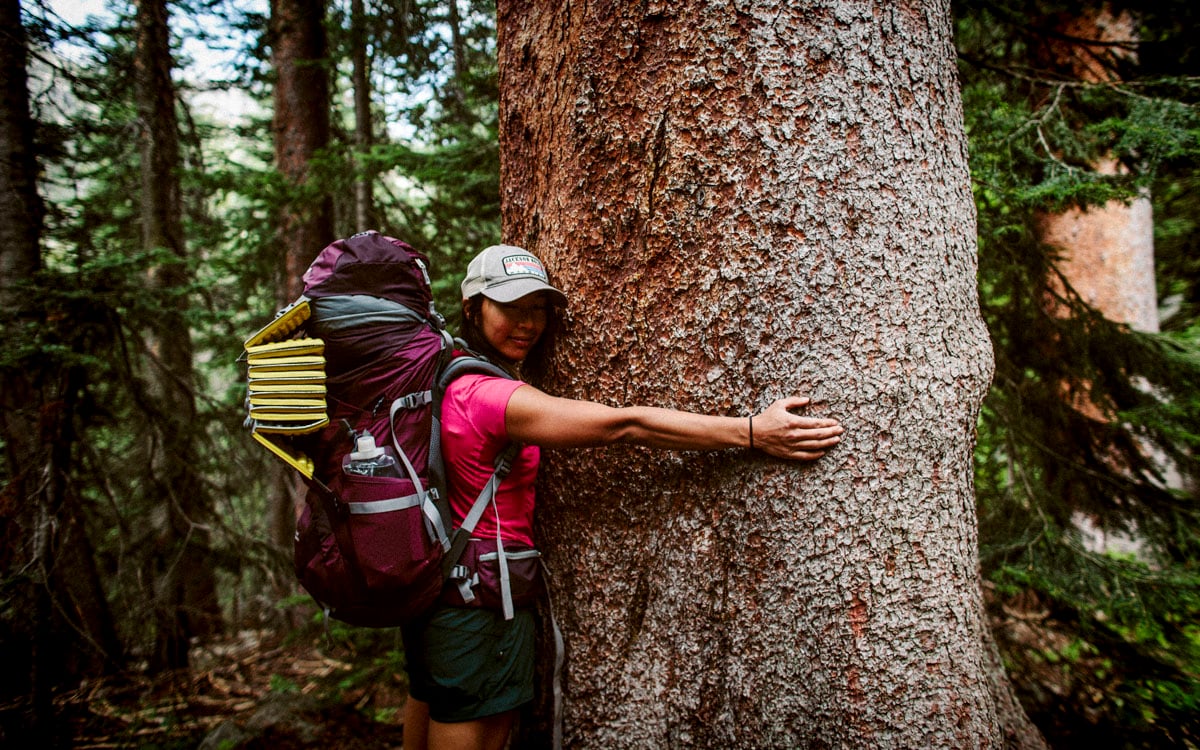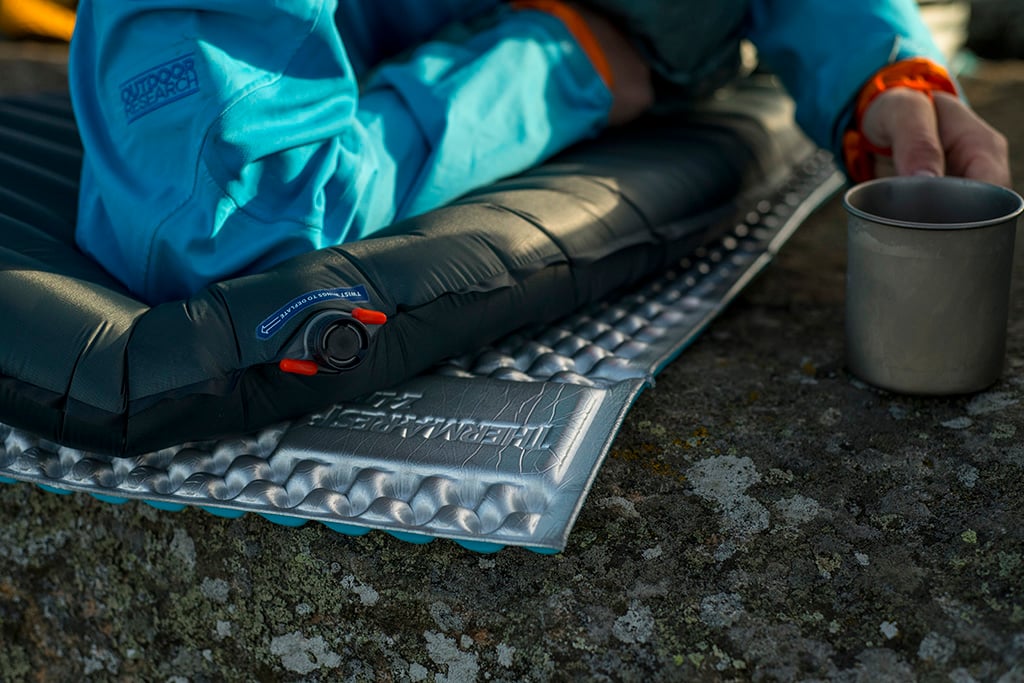Whether you’re headed out on your first backpacking trip or finishing your Triple Crown 7,700 miles later, the gear you pack can make or break your hike. With ever more options that claim to be ultralight or ultra-featured, how do you land on the right kit for you?
Ultimately, gear decisions are driven by where you prioritize having comfort during your adventure: the hiking portion or your time in camp. Each gear decision you make will affect both. Keep in mind that if every piece of gear is catered to comfort in camp, you’ll be so sore and exhausted from carrying that heavy load that you’ll have a hard time relaxing at the end of the day.
My goal here is to lay out the pros and cons of common gear dichotomies like tents vs. tarps, air mattresses vs. closed-cell foam pads, stoves vs. cold soaking, and suspension-framed packs vs. going frameless.
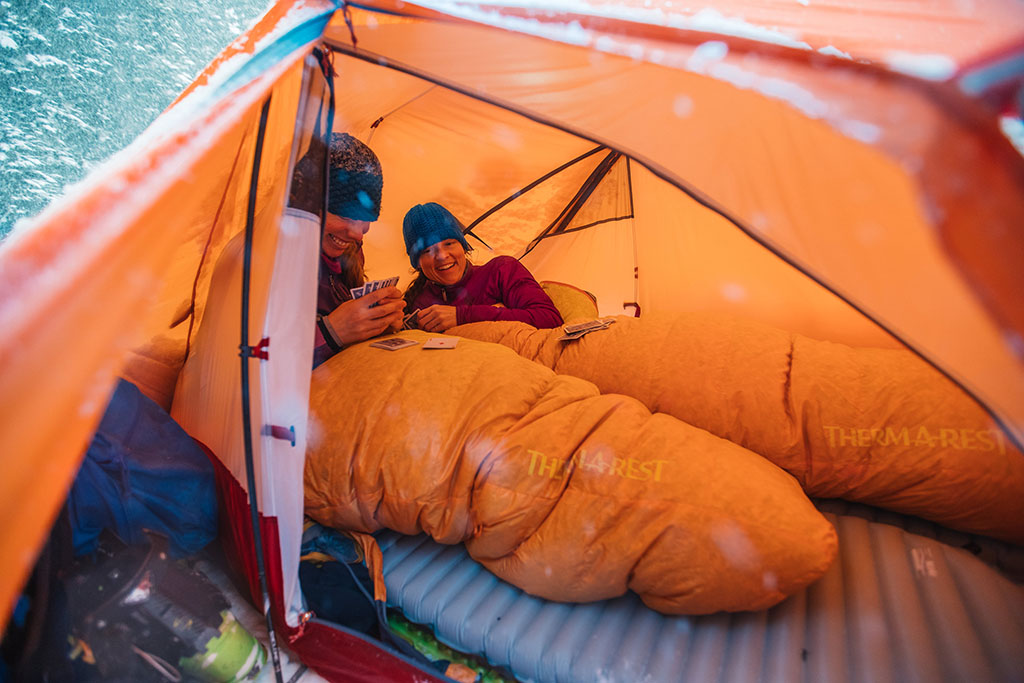
Tents vs. Tarps
Pros for tents:
- Freedom of setup, especially with freestanding tents, be it on wooden tent platforms, rocky terrain, or soil too soft to stake.
- Fast setup versus dealing with lots of stakes and tension points on a tarp.
- Full bug and critter protection.
- Typically more spacious accommodations than enclosed tarps.
Cons for tents:
- Typically heavier and pricier than tarps.
- Limited fabric options.
Pros for tarps:
- Lightest weight option for shelter.
- Variety of materials from Dyneema fabric to silicon nylon blends.
- A simple A-frame tarp is extremely roomy.
- Variations for setup depending on terrain and weather for rectangular tarps.
- Doubles the use of your trekking poles as tent poles.
- Wide price range depending on material and size.
Cons for tarps:
- Condensation and lack of ventilation when set up fully enclosed.
- Less headroom than tents depending on setup.
- Separate bug netting required on most models if protection is needed.
- Longer setup time as tension and pitch need to be adjusted.
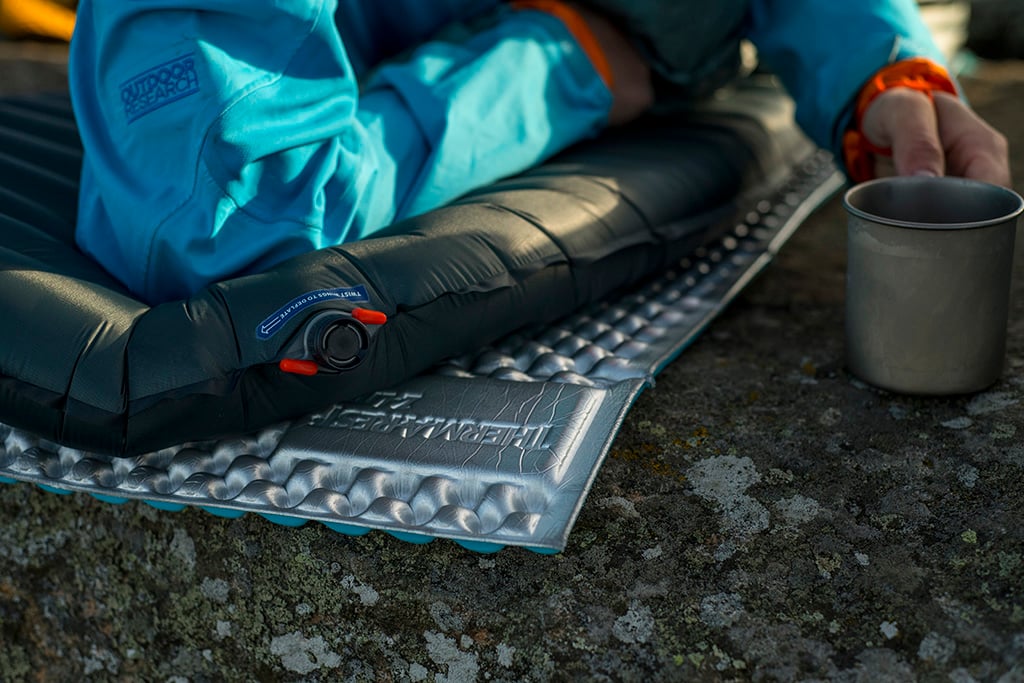
Air Sleeping Pads vs. Closed-Cell Foam Pads
Pros for Air Sleeping Pads:
- Much more comfortable for side sleepers.
- Smaller pack size.
- Better quality sleep means better quality hiking.
- Higher-end air mattresses often weigh less than closed-cell foam ones.
Cons for Air Pads:
- Much more costly than closed-cell foam.
- Cold weather can cause subtle deflation.
- Risk of punctures and tears.
- Takes time and energy to inflate/deflate.
- Can be noisy when moving around at night.
Pros for Closed-Cell Foam:
- Most cost-efficient way to insulate and provide a little extra comfort.
- If you are carrying a frameless pack, the Z Lite SOL can fold into a perfect back pad on the inside of your pack providing structure to the bag.
- Doubles as a seat during breaks if carried on the outside of your pack, and in camp.
- Typically lasts around 3,000 miles before the foam packs down. It will still insulate but not provide the same comfort.
Cons for Foam:
- Side sleepers can experience hip pains.
- Takes time to get comfortable sleeping on a thin foam pad. In the meantime, your energy is affected every day.
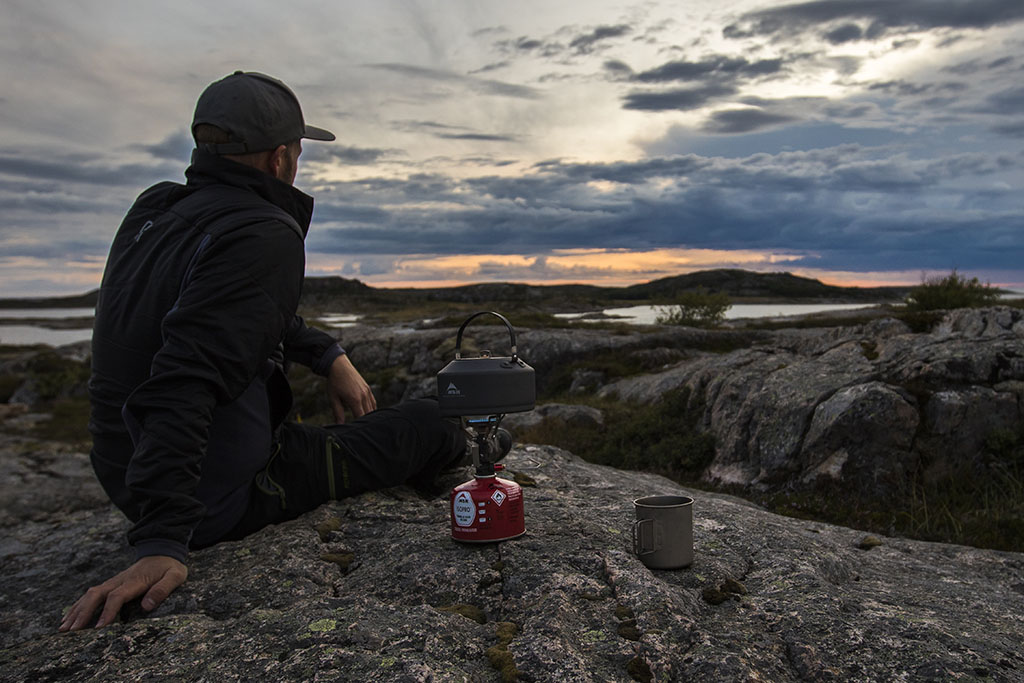
Stove vs. No Stove
Pros for Stoves:
- The mental boost of warm food after a long, cold, wet day is hard to beat.
- More food options open up when you have the ability to boil and simmer: rice, quesadillas, hash browns, etc. A variety of flavors becomes more and more. important the longer you’re away from home.
- Hot coffee. Need I say more?
Cons for Stoves:
- Canister stoves: Cost of fuel can add up after a while and finding canisters can be a challenge in remote areas.
- Canister stoves: Weight, bulk and waste.
- Alcohol stoves: Usually included in burn bans due to lack of ‘off switch’.
Pros for Cold Soaking:
- Most of the food that you’d cook with boiling water can also be soaked in cold water in a sealed jar for an hour or two to create a saucy meal.
- Great way to get more calories and flavor than regular snacks throughout the day.
- Almost entirely eliminates the weight of a cook system.
- No need to buy or search for fuel on resupply.
Cons for Cold Soaking:
- Obviously less appealing than warm food, a cold mush at the end of a long day can be demoralizing.
- Rice and (non-ramen) pasta don’t tend to cold soak well, limiting food variety for dinners.
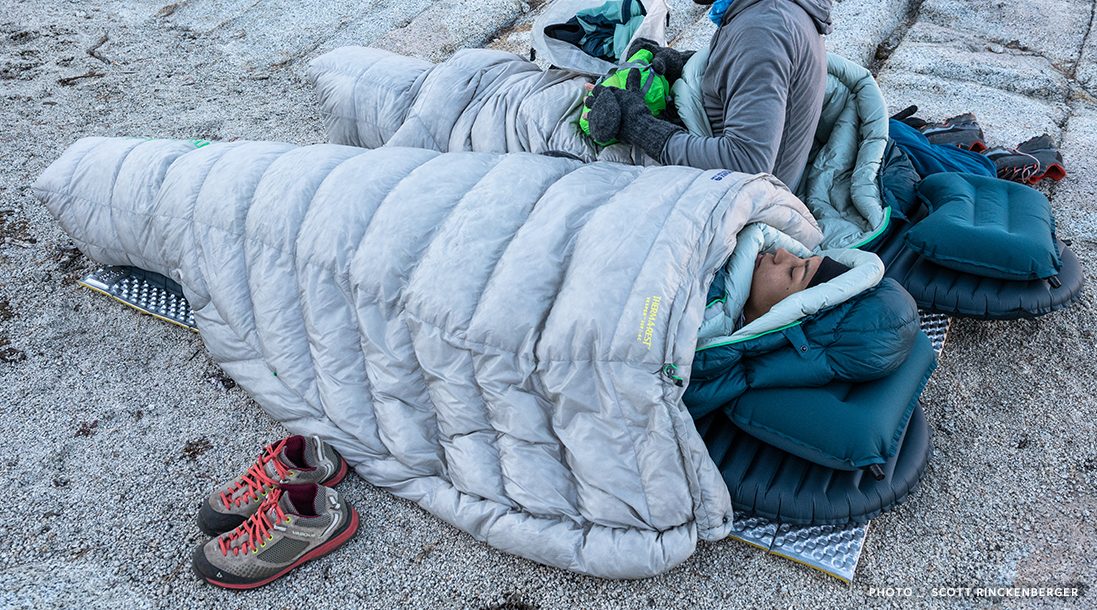
Mummy Sleeping Bags vs. Quilts
Pros for Mummy Sleeping Bags:
- Nearly ubiquitous as the sleeping bag style, mummy bags contour to the shape of your body, eliminating cold spots.
- The warmest option because they enclose you entirely.
- Offered in any temperature rating you could need for your adventure.
- Offered in the most color options and price points you could want.
Cons for Mummy Bags:
- Typically heavier and bulkier than any quilt unless you are paying top dollar.
Pros for Quilts:
- By eliminating the fabric and insulation that would otherwise be compressed underneath you, quilts cut down weight and bulk significantly.
- Cottage industry companies allow for customization of a quilt if you prefer to get an exact color and temperature rating.
- Versatile designs allow you to use the same quilt year-round if the temp rating is low enough.
- Typically, the foot box is able to be opened or cinched shut for ventilation. Also, the back can usually be buttoned up in freezing temps to eliminate any drafts.
Cons for Quilts:
- If you are a cold sleeper, the draft in a quilt can sometimes be too chilly for some.
- Being a niche product, the cost of quilts is relatively high.
- Lying directly on a sleeping pad can be uncomfortable for some (can be resolved with a sheet).
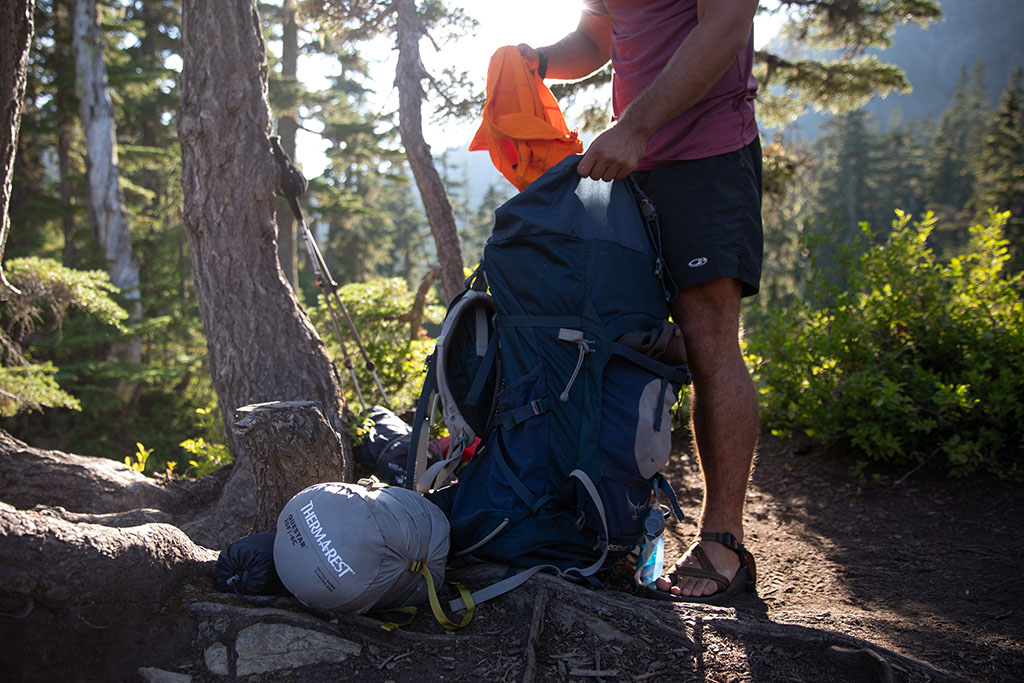
Suspension Framed Backpacks vs. Frameless Backpacks
Pros for Suspension Framed Packs:
- If your total pack weight after food and water is over 20-25 lbs, a lightweight suspension pack will provide significantly more comfort than a frameless bag.
- The airflow behind your back will help prevent sweating, conserving water.
- Being able to effectively shift pack weight from hips to shoulders throughout the day gives the option of allowing injured or stressed muscles to heal.
Cons for Suspension Framed Packs:
- Higher cost than frameless packs.
- The weight of the pack itself is enough for ultralight hikers to shy away; though ultralight options are beginning to emerge.
- Suspension packs typically are not designed with the intention of keeping your pack on all day. If you are a hiker who likes to go without stopping, many frameless packs cater specifically to that.
Pros for Frameless Packs:
- The lightest option and about half the price of suspension frames.
- The features built into frameless packs are usually all about efficiency; if you don’t want to have to take off your pack for snacks, map checks, etc. many cottage industry companies have good options.
- The lack of frame allows more freedom of movement.
- Better for more petite body types.
- Navigating certain terrain or tree blowdowns is easier with a frameless pack.
- Offered in a variety of materials that increase or decrease durability, waterproofness and cost.
Cons for Frameless Packs:
- If you haven’t been able to shave your base weight (aka all gear, not including food, fuel and other consumables) below at least 12 lbs, a frameless pack is probably going to be uncomfortable after a few days.
- Space can be limited, making longer food carries or bear canister requirements an issue.
Related Posts:
- 10 Ways to Lighten Your Backpacking Pack Weight
- Lightweight Hiking Gear: 5 Thru Hike Essentials
- 10 Essentials for Backpacking with Dogs
Updated. Originally Published July 6, 2019.
